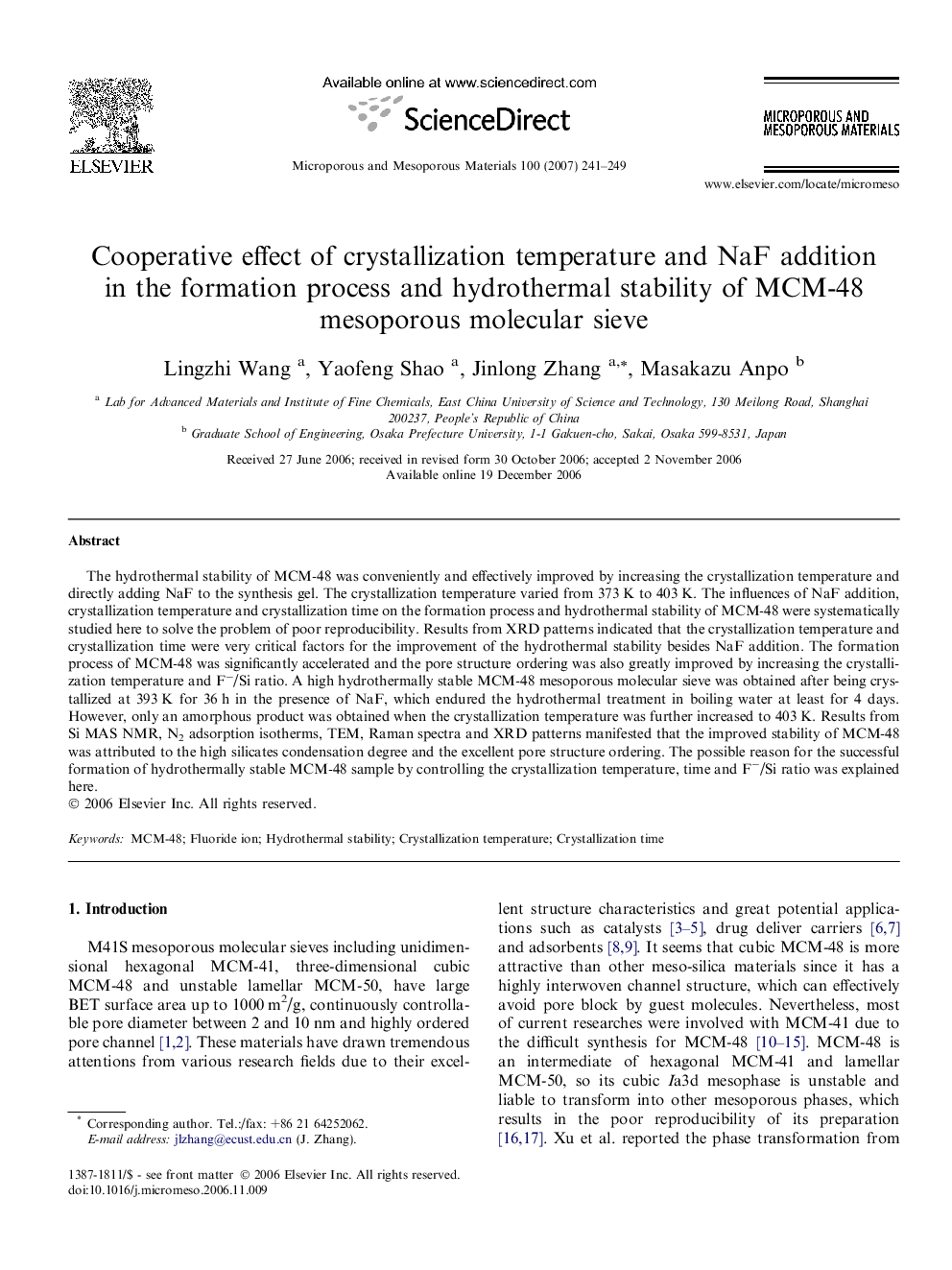| Article ID | Journal | Published Year | Pages | File Type |
|---|---|---|---|---|
| 76560 | Microporous and Mesoporous Materials | 2007 | 9 Pages |
The hydrothermal stability of MCM-48 was conveniently and effectively improved by increasing the crystallization temperature and directly adding NaF to the synthesis gel. The crystallization temperature varied from 373 K to 403 K. The influences of NaF addition, crystallization temperature and crystallization time on the formation process and hydrothermal stability of MCM-48 were systematically studied here to solve the problem of poor reproducibility. Results from XRD patterns indicated that the crystallization temperature and crystallization time were very critical factors for the improvement of the hydrothermal stability besides NaF addition. The formation process of MCM-48 was significantly accelerated and the pore structure ordering was also greatly improved by increasing the crystallization temperature and F−/Si ratio. A high hydrothermally stable MCM-48 mesoporous molecular sieve was obtained after being crystallized at 393 K for 36 h in the presence of NaF, which endured the hydrothermal treatment in boiling water at least for 4 days. However, only an amorphous product was obtained when the crystallization temperature was further increased to 403 K. Results from Si MAS NMR, N2 adsorption isotherms, TEM, Raman spectra and XRD patterns manifested that the improved stability of MCM-48 was attributed to the high silicates condensation degree and the excellent pore structure ordering. The possible reason for the successful formation of hydrothermally stable MCM-48 sample by controlling the crystallization temperature, time and F−/Si ratio was explained here.
